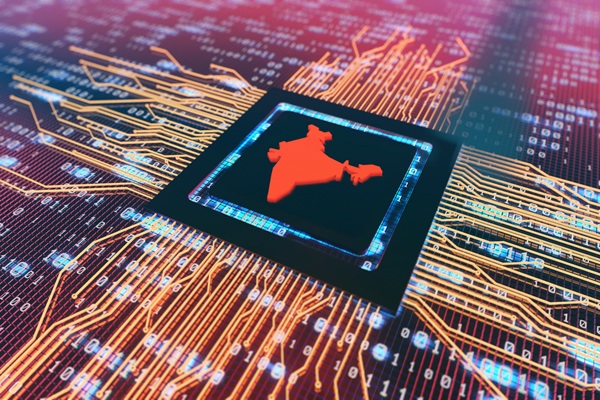.png)

Sachin Malhotra, a banking veteran with 26 years’ experience, was an MD at Standard Chartered, analysing financial cycles and economic trends
May 10, 2025 at 9:38 AM IST
The Supreme Court’s recent judgment on the Bhushan Power and Steel Ltd insolvency case has delivered a big blow to India’s bankruptcy regime. By striking down JSW Steel’s resolution plan, years after its implementation, the Court has reopened old wounds and introduced a new element of unpredictability into the already delicate Insolvency and Bankruptcy Code ecosystem.
This is not merely a setback for JSW Steel or its lenders. It’s a moment of reckoning for India’s entire stressed asset ecosystem. The ruling raises uncomfortable questions: Whose rights were violated? Were procedural lapses severe enough to warrant unwinding an already executed transaction? And what precedent does this now set for ongoing and future resolutions under the IBC?
Broken Trust
To understand how the process derailed, one must go back to July 2017. BPSL was among the largest defaulters the RBI had directed to be pushed into insolvency proceedings. It owed over ₹478 billion, largely to banks and financial institutions, with only ₹6.21 billion owed to operational creditors.
After a high-profile bidding contest involving JSW, Tata Steel, and Liberty House, the Committee of Creditors selected JSW’s resolution plan. That should have been the end of it.
But in April 2019, with the resolution plan already before the National Company Law Tribunal for approval, the Enforcement Directorate filed a criminal case against BPSL’s former promoters and later attached its assets. This action directly undermined the foundational IBC principle that shields new owners from liabilities tied to past wrongdoing. Thankfully, the National Company Law Appellate Tribunal intervened, ordering the ED to refund ₹40.25 billion and upholding the new promoter immunity clause.
That should have cleared the path. But it didn’t.
Creditor Conflict
At the centre of the Court’s objections was the alleged procedural impropriety in how operational creditors—often the smallest and weakest in the creditor hierarchy—were treated. Though they don’t sit on the CoC, the law mandates that operational creditors must receive at least as much as they would under liquidation and must be paid before financial creditors.
The SC flagged that the Resolution Professional failed to explicitly certify this requirement, which is a statutory obligation. There were also post-CoC modifications to the plan by JSW Steel that lacked transparency and possibly came at the cost of operational creditors.
But the facts are black and white. Some of the operational creditors were allegedly linked to BPSL’s former promoter, Sanjay Singhal—who, not incidentally, was a co-petitioner in the challenge to the resolution plan. Was the challenge, then, a good faith attempt to assert creditor rights or a strategic ploy by the promoter to derail a successful resolution and trigger liquidation?
Also glaring was the RP’s inaction on identifying and recovering proceeds from ‘avoidance transactions’, which is another critical IBC safeguard. These are pre-insolvency transfers that defraud creditors or unfairly benefit certain parties. Despite the ED’s criminal case alleging fund diversion, the RP did not pursue these provisions. If enforced, they could have bolstered creditor recoveries or funded operations during the resolution.
Meanwhile, delays mounted. Payments to financial creditors came 540 days after NCLT approval; for operational creditors, it took 900 days. The IBC stipulates a 30-day payment window post-approval. JSW had, in fact, challenged conditions imposed by the NCLT, possibly contributing to the timeline slippage.
Bitter Medicine
Should the SC’s ruling result in a full unwinding, the implications would be immense. JSW, which paid ₹197 billion to lenders, may now seek a refund, potentially with interest. Banks would have to re-provide, straining already stressed balance sheets.
More damaging, however, is the message sent to investors and potential resolution applicants. If concluded resolution plans can be reversed years later, the sanctity of the process is in question. For international investors, including those who bought security receipts linked to BPSL’s recovery, this verdict may seem like regulatory whiplash. Their frustration is warranted.
India has struggled for decades to manage insolvency. The IBC was a leap forward, creating a time-bound and judicially overseen mechanism to rescue viable companies and maximise creditor value. Imperfect though it may be, it represents the best hope yet to resolve non-performing assets in a rules-based, market-friendly manner. Undermining its finality risks bringing back the ghost of the failed Board for Industrial and Financial Reconstruction regime and the judicial gridlock of debt recovery tribunals.
That said, the judgement has spotlighted genuine flaws in the current process. The RP’s responsibilities need sharper enforcement. Financial creditors must be held to account for plan details that may disadvantage other stakeholders. Operational creditors must be protected, not just in letter, but in spirit, especially when they are excluded from decision-making.
The framework already provides safeguards: RP certification, judicial oversight, CoC voting thresholds. But if these aren’t rigorously followed—or if the RPs are seen as passive enablers of the CoC’s will—it corrodes confidence in the process.
Precedent Risk
The fear now is that this judgment opens the floodgates to challenges in other settled cases. The very nature of insolvency resolution—of distributing pain among all stakeholders—guarantees some aggrieved party. If every such party now sees an opportunity to overturn a plan through judicial intervention, the IBC’s efficiency and predictability are compromised.
Indeed, the government appears to sense this danger. Reports suggest that public sector banks, which form a large part of BPSL’s CoC, have been nudged to file a review petition. One hopes it succeeds, not to vindicate JSW, but to preserve the larger integrity of the system.
India’s stressed asset ecosystem is evolving. Recent RBI initiatives to securitise distressed debt and deepen the market for junk bonds are steps in the right direction. But such efforts will flounder if legal certainty is lacking. The IBC must be refined, not retracted.
That begins with tightening the role of RPs, making CoC decisions more accountable, and ensuring that operational creditors are neither sidelined nor used as Trojan horses by disgruntled promoters. The judiciary, too, must find ways to balance procedural rigour with economic finality for the sake of a system still finding its feet.
The IBC was never about perfection. It was about pragmatism. Let’s not lose sight of that in pursuit of legal purity. As BPSL’s resolution unravels, so does the fragile consensus that insolvency is a shared sacrifice, not a zero-sum game.
Also read:
JSW-Bhushan Power Saga And The Cost Of Compromised Process In Bankruptcy Law
IBC Cannot Survive If Finality Is This Fragile




